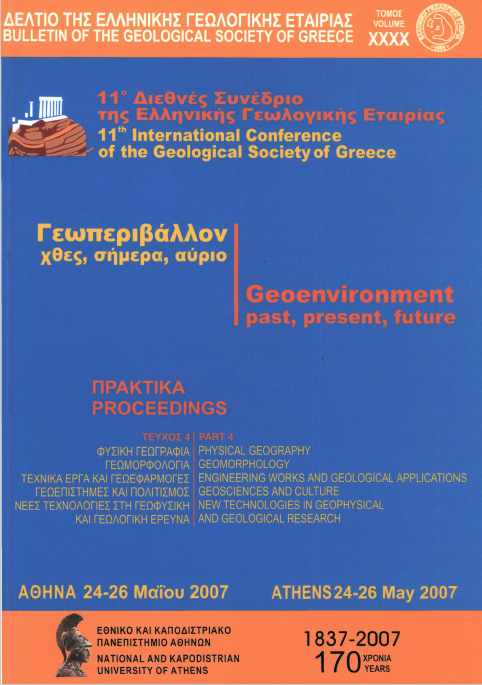Obtaining information on the Q-structure of the southern Aegean subduction area by spectral slopes from temporary and permanent networks.

Abstract
Anelastic attenuation studies have been considered one of the main controlling factors affecting seismic wave propagation, providing important information on the earth’s structure. In order to investigate the attenuation structure of the southern Aegean subduction area, we employed ~400 intermediate depth earthquakes recorded by temporary and permanent networks. Using the recorded waveforms we have calculated a frequency-independent path attenuation operator t* for both P and S waves. Initially an automated method was employed, where t* was automatically calculated by the slope of the acceleration spectrum produced above the corner frequency, fc. Computations were performed in the 0.2-25Hz frequency band, using only spectra with a signal to noise ratio greater than 3, and above the noise level for at least the range 1-4Hz (for S and P waves, respectively). In the second approach, the selection of the segment of the spectrum was carried out manually for optimum fitting. No considerable linear trend revealing dependence of t* with distance could be observed on the original data, whereas strong clustering for different focal depth ranges was observed. The spatial variation of the obtained t* values shows that, in general, along arc stations present low values of t*, while bac k-arc stations show much larger values. The observed t* difference becomes more pronounced as the depth of the earthquakes increases, suggesting a significant localized effect of the high -attenuation (low-Q) mantle wedge, in agreement with independent observation.
Article Details
- How to Cite
-
Ventouzi, C., Papazachos, C., Papaioannou, C., Hatzidimitriou, P., & EGELADOS, working group. (2013). Obtaining information on the Q-structure of the southern Aegean subduction area by spectral slopes from temporary and permanent networks. Bulletin of the Geological Society of Greece, 47(3), 1366–1375. https://doi.org/10.12681/bgsg.10932
- Section
- Geophysics and Seismology

This work is licensed under a Creative Commons Attribution-NonCommercial 4.0 International License.
Authors who publish with this journal agree to the following terms:
Authors retain copyright and grant the journal right of first publication with the work simultaneously licensed under a Creative Commons Attribution Non-Commercial License that allows others to share the work with an acknowledgement of the work's authorship and initial publication in this journal.
Authors are able to enter into separate, additional contractual arrangements for the non-exclusive distribution of the journal's published version of the work (e.g. post it to an institutional repository or publish it in a book), with an acknowledgement of its initial publication in this journal. Authors are permitted and encouraged to post their work online (preferably in institutional repositories or on their website) prior to and during the submission process, as it can lead to productive exchanges, as well as earlier and greater citation of published work.








